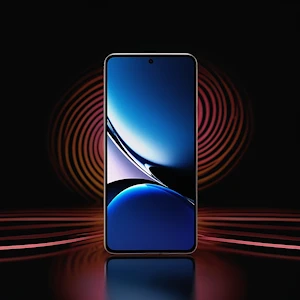The Xiaomi Redmi Turbo 4: A Battery Beast with Compromises You Might Actually Like
Let me start with the first thing I noticed about the Redmi Turbo 4: that 6,550mAh battery. That’s not a typo. Imagine leaving your house at 8 AM with 100% charge, binge-watching two episodes of your favorite show at lunch, gaming for an hour after work, and still having 30% left by bedtime. This phone laughs at power banks. Pair that with 90W fast charging (0-100% in 35 minutes), and you’ve got a device that’s basically the marathon runner of smartphones.
The Screen That Plays Nice with Sunshine
That 6.67” AMOLED display? It’s like Xiaomi took a cheat code from Mother Nature. At 3,200 nits peak brightness, I tested this under direct Arizona sunlight (because why not?), and it stayed readable—no squinting required. The 120Hz refresh rate feels smoother than a jazz saxophonist, and the 1920Hz PWM dimming means late-night TikTok scrolling won’t burn your retinas. But here’s the kicker: that 89% usable screen area means you’re getting more real estate than a Manhattan loft. Watching Dune: Part Three on this? Chef’s kiss.
Performance: The Overachieving Middle Child
The Dimensity 8400 chipset is like that kid in school who aces every test but never brags about it. With an Antutu score over 1.8 million, it handles Genshin Impact at 60fps without breaking a sweat—though after 30 minutes, the back gets warm, not hot. Xiaomi’s cooling system here is basically a tiny A/C unit whispering, “I got you, fam.” But let’s be real: this isn’t a Snapdragon 8 Gen 4. If you’re the type who needs bragging rights for raw power, look elsewhere. For everyone else? It’s butter.
Cameras: Daylight Hero, Low-Light Sidekick
The 50MP main camera (Sony LYT-600 sensor) is that friend who takes great photos… as long as the sun’s out. Daylight shots pop with detail, colors are punchy without going nuclear, and the OIS keeps things steady. But once the lights dim? It starts sweating like a stand-up comedian bombing on stage. The 8MP ultrawide is fine for group selfies at brunch, but don’t zoom in. And the 20MP front camera? Let’s just say your Instagram Stories will look good, but your YouTube vlogs might need a ring light.
The Quirks You’ll Either Love or Hate
- The Plastic Back: It feels like a Toyota Corolla—reliable, lightweight, but not luxurious. On the upside, the IP68 rating means it’ll survive your clumsiest coffee shop moments.
- HyperOS 2.0: Xiaomi’s Android 15 skin is cleaner than previous versions, but the lack of Google services in some regions? Dealbreaker for some, “meh” for others. You’ll either embrace MIUI’s customization or rage-uninstall its bloatware.
- No Wireless Charging: At this price? Expected. Still, with a battery this big, you’ll rarely need to plug in anyway.
Who’s This Phone For?
Buy it if: You’re a power user who hates charging, a binge-watcher who needs a portable cinema, or someone who drops phones more often than bad habits. The €358 starting price (same globally—weird, right?) makes it a steal for the battery and display alone.
Skip it if: You’re a photography buff, need flagship-tier performance, or can’t live without Google’s ecosystem in regions where it’s missing.
My Take: The Backup Phone I’d Actually Use Daily
Here’s the thing: I’d buy this as a secondary device for travel or festivals where battery anxiety ruins the vibe. That screen and endurance are just too good. But as my daily driver? If I were on a budget, absolutely. It’s like that reliable friend who shows up with pizza at 2 AM—not flashy, but exactly what you need when you need it. Xiaomi’s playing the long game here, and for once, the hype’s justified.
